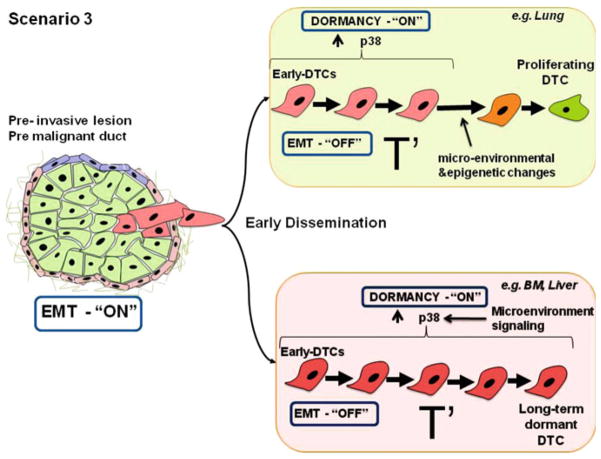Fig. 3.
Scenario 3 envisions that in “pre-malignant” cells, from pre-invasive lesions, p38 signaling is downregulated favoring an EMT and early dissemination to target organs (e.g., lung and bone marrow). However, these early DTCs are unfit to initiate metastatic growth, thus, once these early DTCs arrive to secondary organs a dormancy program is turned “ON” possibly mediated by plastic regulation of p38 that is restored by microenvironmental signals. Therefore, early DTCs will undergo a long dormancy phase before forming metastasis. This is deduced from the long time to metastasis development after primary lesion treatment. As described in Scenario 1, DTCs that lodge in favorable microenvironments, such as lungs, will be exposed to microenvironmental and epigenetic changes that will allow early DTCs to grow and accumulate additional genetic alterations that eventually produce cells fit to initiate metastasis. In contrast, DTCs that lodge in unfavorable microenvironments, such as BM or liver, will remain dormant. Early dissemination will produce long dormancy periods at any site because cells have to accumulate additional changes. But it is possible that in certain sites microenvironmental and epigenetic changes allow cells to initiate slow proliferation that then drives genomic instability when vigorous growth is initiated

